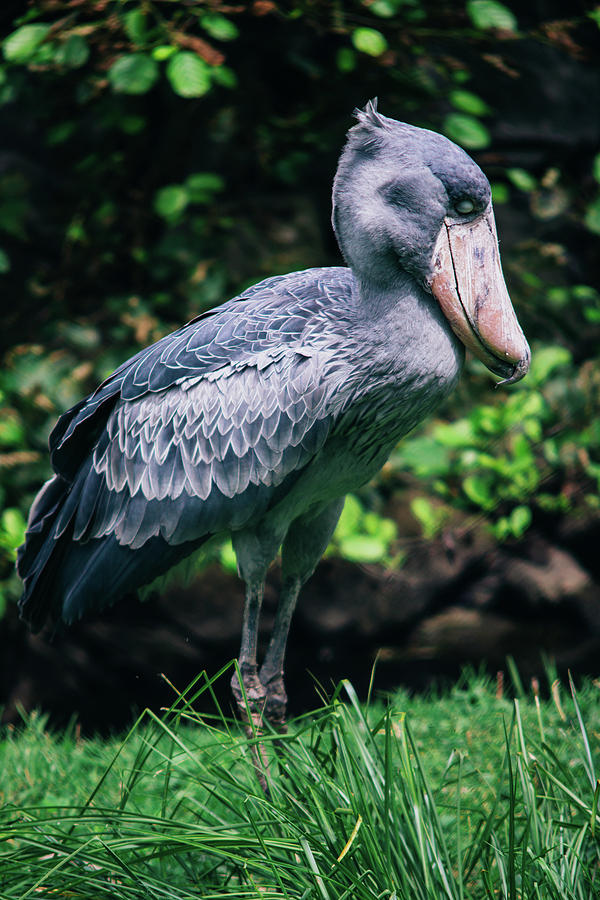
The Shoebill stork is a large wading bird that is found in swampy areas of Africa. The Shoebill Stork is a protected species in most of its range, and efforts are underway to help preserve this majestic bird. In addition, Shoebills are sometimes killed by people who mistake them for crocodiles or snakes. Shoebills are hunted for their meat, feathers, and eggs. The primary threats to the Shoebill Stork are habitat loss and hunting. The Shoebill Stork is a conservation-dependent species, which means that its population is declining and it is at risk of becoming extinct in the wild. However, there are some reports of Shoebills living for up to 30 years in captivity. Shoebills typically have a lifespan of around 20 years. The Shoebill Stork is a large, distinctive bird that is native to Africa. Shoebill Stork Image Shoebill Stork Lifespan Nevertheless, they are an impressive sight, and their size is truly breathtaking. Despite their size, Shoebill storks are actually quite shy and reclusive, preferring to stay away from humans. These massive birds can weigh up to 8 kilograms, making them one of the largest species of stork. Shoebill storks are found in Africa, and their diet consists mainly of fish and other water creatures. They are mostly grey in color, with a white belly and a large, black beak. The Shoebill Stork is a very large bird, with a wingspan of up to 3 meters. The Shoebill Stork is a fascinating bird, and its diet is just one of the many interesting facts about this unique creature. When it spots an unsuspecting victim, it will strike with deadly accuracy, using its powerful bill to kill and eat its prey. It typically hunts by wading through shallow water and waiting for prey to come within range. The Shoebill Stork has a diet that consists mostly of fish, but it will also eat reptiles, amphibians, and small mammals. It gets its name from its large bill, which is shaped like a shoe. The Shoebill Stork is a large bird that is found in Africa. The Shoebill stork is a protected species, but their habitat is threatened by human activities such as agriculture, livestock grazing, and deforestation. Shoebill storks diet consists mainly of fish, but they will also eat reptiles, amphibians, and invertebrates. The Shoebill stork typically nests in trees, but will also nest on the ground. Shoebill storks are found in swampy habitats with dense vegetation and standing water. The Shoebill stork is mostly a solitary bird, but can be found in pairs or small groups.

The Shoebill stork is a bird that is mainly found in tropical east Africa. Although its numbers are declining, the Shoebill stork is not currently considered to be endangered. When it is seen, the Shoebill stork is usually alone or in pairs. It is a shy bird that is not often seen by humans. The Shoebill stork is found in Africa, primarily in swampy areas near rivers and lakes. Its diet consists mainly of fish, but it will also eat reptiles, amphibians, and small mammals. The Shoebill stork’s wings are broad and have a span of approximately six feet. It has a long neck, legs, and bill that are all grey in color. The Shoebill stork is a large bird that can reach up to four feet in height. They then raise the second egg and release the bird into the wild when it's old enough.Conclusion Shoebill Stork Shoebill Stork Description On a good note, lots of Rehabilitation Centers and bird parks go out and collect the second egg the moment the first one hatches and is healthy. The first egg will hatch before the second and the stronger and bigger chick will either kill the second chick or the parents will just ignore the weaker one till it dies. So once the first egg is laid, it will start to be incubated and then a few days later the second egg is laid and then that's incubated. With the raptors, they eggs are incubated asynchronously. If they hatched at different times they would give away the position of the other eggs and endanger everyone. That way they all hatch and then leave the nest site and go hide with their mother. This is usually in birds that nest on the ground. That way the chicks will all be born on the same day within hours of each other.

With synchronous incubation the eggs will be incubated once the last egg is laid. Breeding doesn't always take place annually and so instead of building a nest, migrating, etc and the one egg is lost, they lay two.īirds also will either start incubation once the first egg is laid or once the last egg is laid. The second egg is just an insurance if anything happens to the first egg. Two eggs are laid with the intention of only one surviving. Lots of raptors/birds of prey practise this.


 0 kommentar(er)
0 kommentar(er)
